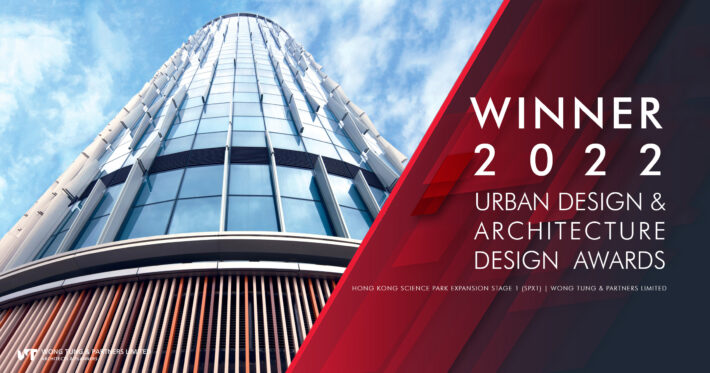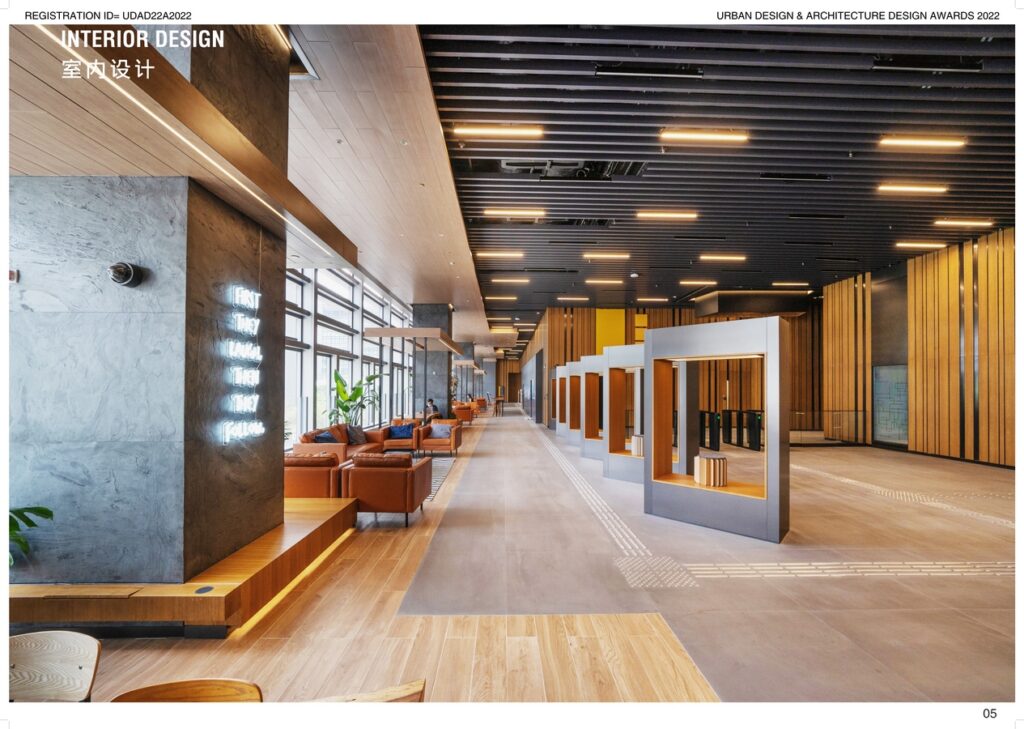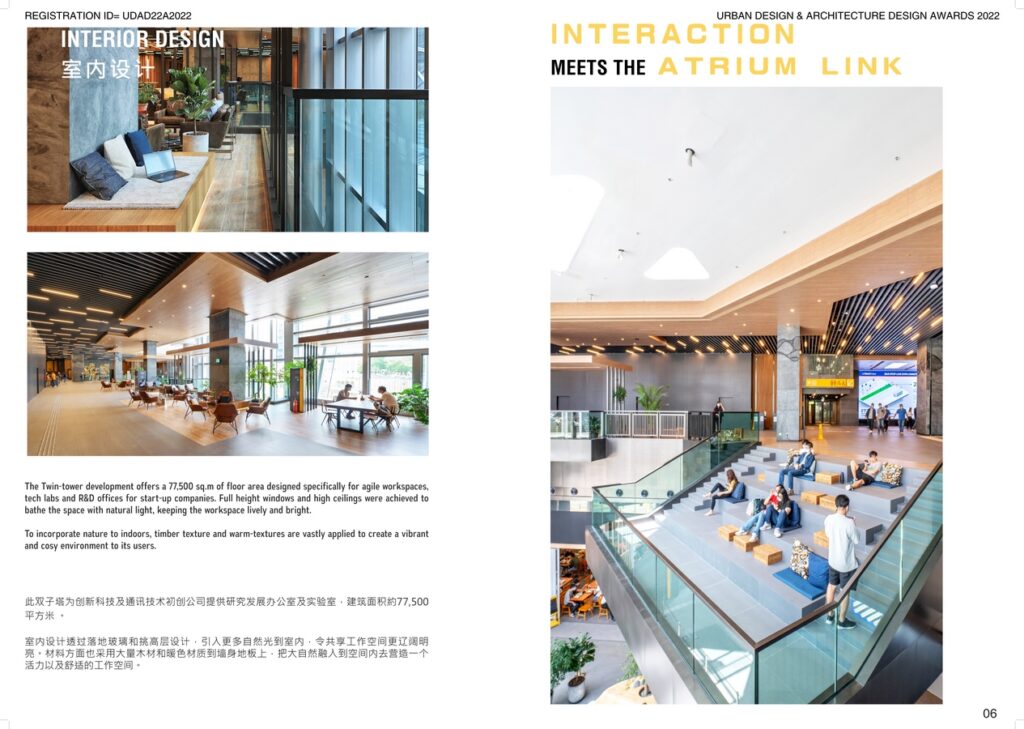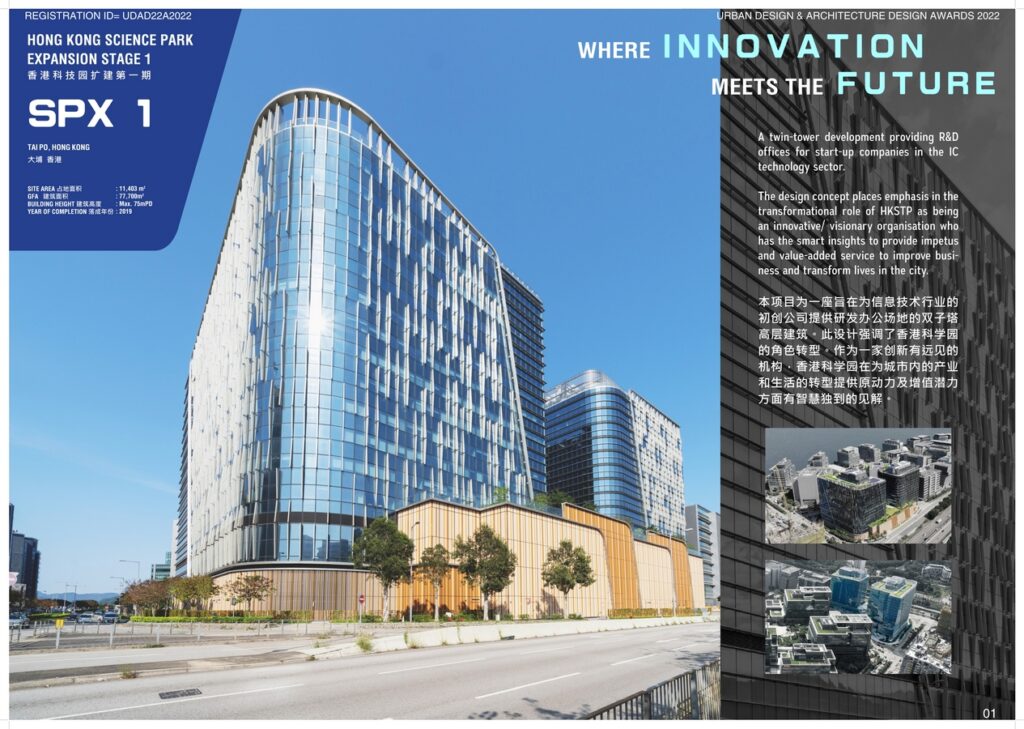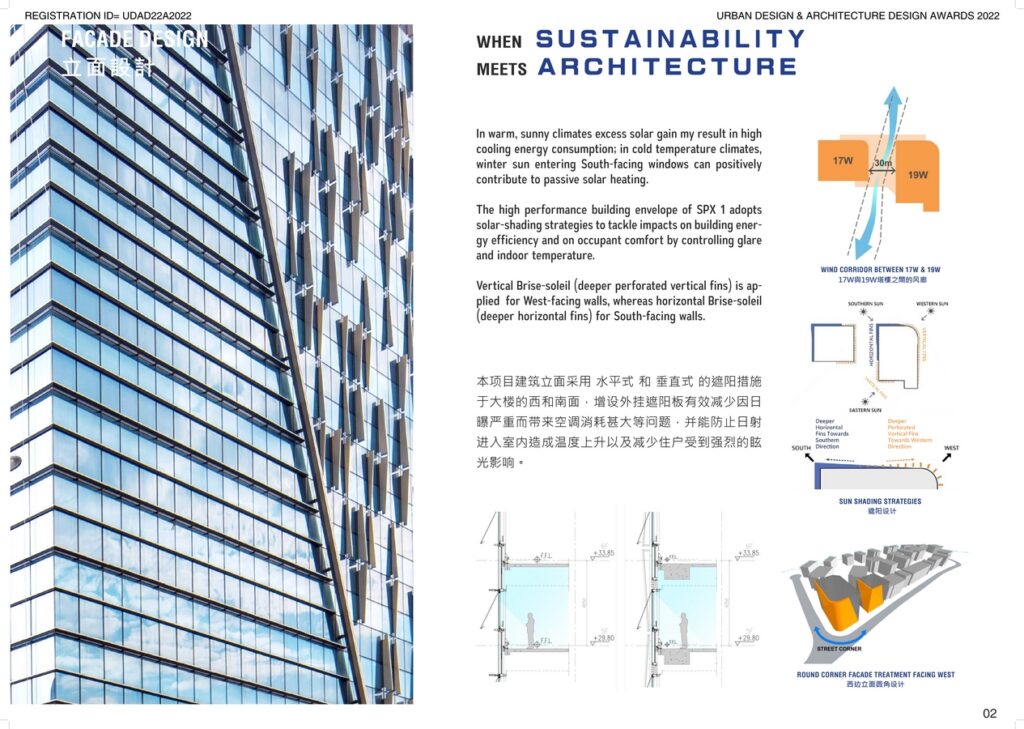A twin towers development comprising R&D offices, laboratories, shared amenity/ meeting spaces for tenants and F&B outlets, provides research-related infrastructure and facilities to accelerate the development of healthcare and AI/robotics technological research.
It is also a pioneering project in HK adopting the “Smart City” theme in the building design. Both passive and active design approaches were introduced to achieve a building that is green and sustainable. The passive design of the building ranges from the disposition of the buildings to the employment of roof garden as effective insulation system and vertical shading fins at west elevation to effectively shield off undesirable sunlight.
Urban Design & Architecture Design Awards 2023: Discounted Entries Open Now! Save $50
Super Early Discount – 1st May 2022 to 30th June 2022 – $199 = $149
Gold 🏆 Winner
Urban Design & Architecture Design Awards 2022
Hong Kong Science Park Expansion Stage 1 (SPX1)
Office Building Built
Firm
Wong Tung & Partners Limited
Architect/Designer
Wong Tung & Partners Limited
Design Team
John Yuen, Alex Lau, So Ching, Michael Lam, Larry Poon, Jacky Yeung, Steven Wong, Dennis Ng, Eric Lam
Location
Building 17W and 19W, 17 and 19 Science Park West Avenue, Hong Kong
Country
Hong Kong
Photographer/Copyright
©Wong Tung & Partners Limited
Innovation for the future R&D office and laboratory building in the science & technology sector is the main design concept for SPX1. It is realized below:
- Integration of SPX1 with the Existing Campus – SPX1 acts as new generation of R&D office, laboratory building and an iconic gateway of the campus which enhances and connects the existing facilities.
- Composition of Sustainability with Architecture – Wind corridor between the twin buildings, vertical fins for west-facing façade and horizontal fins for south-facing façade are examples of sustainable building design adopted.
- Combination of Greenery and Communal Garden – Green ratio achieves 30% of site area with podium recreational park and organic farm at roof.
Interaction at Atrium Link – The 1/F Atrium Link serves as amenity facilities for R&D office and laboratory and acts as a social gathering place for connection, leisure relaxing environment for creativity as well as co-working space for collaboration.
From the beginning of the project, the aspiration to minimize waste was a priority. Working closely with structural engineers and other consultants, a clear framework/methodology was established to ensure resources were conserved, waste was reduced and mistakes/delays were avoided at every single stage of the project.
Active and passive design was applied in the building design. Various assessments and studies were conducted to realize such design which includes stimulation models (i.e. solar irradiation with and without shading devices study; dynamic thermal stimulation; natural ventilation stimulation; energy simulation tools and dynamics thermal analysis simulation etc.). These models ensure the energy performance of the design could meet the necessary sustainability criteria.


